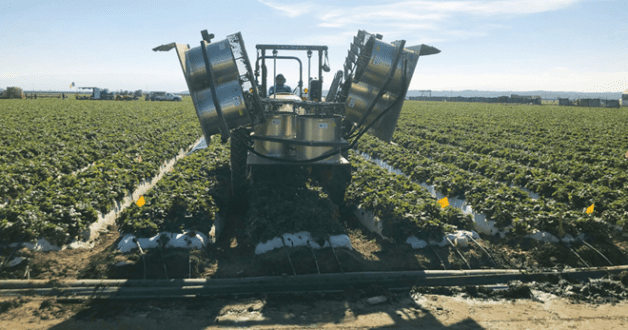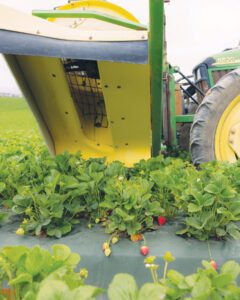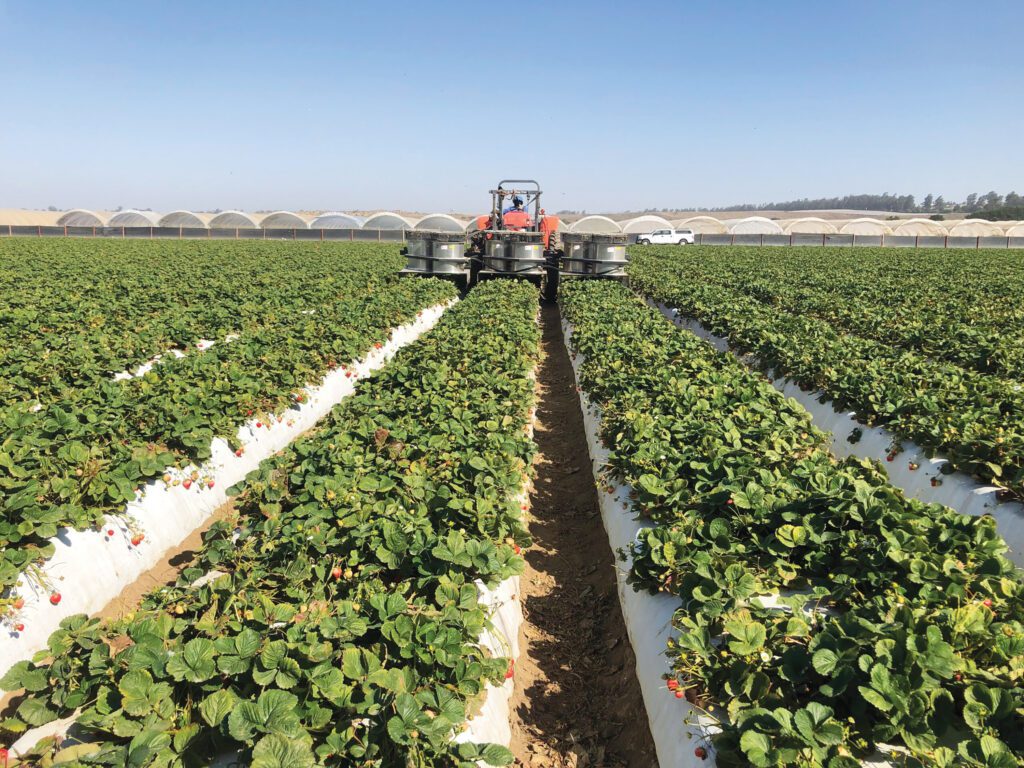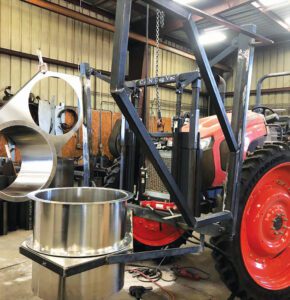

Dec 18, 2023Organic Grower: California’s unique strawberry pest control method
A novel pest management method is sweeping through California strawberry fields. Well, not sweeping, exactly.
Growers and equipment dealers are essentially turning tractors into giant vacuums to remove Lygus bugs, which cause an estimated $200 million in lost sales throughout the state each year. The bugs pierce seeds as the berries develop, causing irregular-shaped fruit, known as cat-facing.


Although research and grower interest in vacuuming Lygus bugs has been around for more than 25 years, a collaboration with the California Strawberry Commission, Cal Poly Strawberry Center, C&N Tractors and growers has greatly improved the efficiency of the bug vacuums. Growers can purchase tractors outfitted with the latest versions of the vacuums, or download plans from the internet (https://strawberry.calpoly.edu/double-barrel-bug-vacuum) and fashion the tractor addons in their shop.
Beyond addressing the ever-present problem of Lygus bugs, the vacuums do so without introducing chemicals to strawberry fields. With 75% of California strawberry growers producing only organic berries, or more likely a mix of organic and conventional, the bug vacuums have been embraced in California, where about 10% of the strawberries crop is grown organically.
“Both organic and conventional growers use the bug vacs because even with conventional growing, you either run out of agrichemicals or there is just too much resistance that has been developed and you need a non-chemical, mechanical solution,” said John Lin, the director of automation engineering for the California Strawberry Commission and Cal Poly Strawberry Center, which is on the university campus in San Luis Obispo, California.
Lin said there are about 300 of the machines in operation throughout California strawberry fields. A majority of growers either use at least one tractor dedicated as a vacuum, or in the case of smaller growers, remove and install the fans and ducts as needed on the tractor. There are also companies that provide the service with the use of autonomous tractors — essentially a Roomba for the field, Lin said.
A satisfied customer
Mayra Paniagua became officially involved in the California strawberry industry in 2014 when she and family members began growing and marketing strawberries in Santa Maria at Golden State Farms, with about 40 acres of production. Her parents met in the California strawberry fields picking berries, and they later owned and operated their own growing operation.


Golden State Farms grows conventional berries only, but she realized a good investment when the business purchased a Lygus bug vacuum in 2016, learning about the equipment the way most farmers do — from other farmers.
“We had seen other growers implement it and they showed us what works best for them,” Paniagua said. “So we applied that to our fields, too.”
During the season, Golden State Farms runs the bug vacuum through the field at least once a week, preferably twice. There’s no mystery of its effectiveness: It takes about an hour to vacuum an acre of berries, and needs to be cleaned of dead bugs and other debris after about an hour.
“You can see them and say, ‘This is efficient,’” Paniagua said. “For growers, it’s an observance, and we do notice the difference, but there has been research conducted by the strawberry commission.”
At some points in the season, running the bug vacuum allows Golden State Farms to cut the synthetic pesticide it would use on a pass of the field by up to 50%, Paniagua said.
It’s significant enough that retail customers have asked to be present during the use of the vacuum, and getting the attention of buyers in such a way is important to a grower, she said.
“Not a lot of people know what goes on in the fields, but we welcome them to see all the sustainable practices that we’re incorporating,” Paniagua said. “We love to share what we do, we love people seeing how strawberries are grown and what goes into it. We are progressive growers, we are conscientious growers, and at the end of the day, everything we do, we do with care and love and that shows.”
A team effort
Lin said the idea first came when growers were using backpack vacuums to sample populations in the field. The leap from a small system to a massive vacuum didn’t take long.
Lin said Hillary Q. Thomas-Sanchez, an entomologist who was senior research manager at the strawberry commission, took on the project. At the time, the vacuum only removed about 2% of the Lygus bugs from plants. She made some modifications and experimented, finding the optimal parameters for operating the vacuum. Thomas-Sanchez increased the Lygus removal to 18%.
Lin joined the commission and strawberry center in 2016 to work on the machine, and the commission funded a dedicated class to work on improving the vacuum as part of a senior design project. Twenty-five students and three Cal Poly professors worked on the project, separating and studying each element of the machine, from airflow, ducts, hydraulics and other aspects. C&N Tractors, which has locations in Watsonville and Paso Robles, was brought in to ensure that whatever the project led to, it could be manufactured and sold.


is manufactured at C&N Tractors,
which has locations in Paso Robles and
Watsonville, California.
In the end, the project more than doubled the airflow through the ducts, increasing Lygus removal by two or three times, Lin said. That version was released about 20 months ago. Since then, C&N has sold more than 50 of the vacuums and about 70 of the original models have been modified with the new plans. Almost 100 have been modified through a “quick fix” that costs just a few hundred dollars, Lin said, which improves airflow about 30%.
For now, there are no plans to continue modifying the vacuum plans in the hopes of increasing its efficiency, Lin said.
“The commission believes we have taken the vacuums as far as practical for growers,” he said. “We changed the airflow, the ducting, fan blades, hydraulics. We tried to leverage as much of the tractor horsepower as we could.
“The value of the bug vacuums, it’s sort of understood now,” he said. “There’s awareness around it and now there are companies building their own custom bug vacuums and providing them as a service.”
There has been some research on the effectiveness of the machine to remove spotted-wing drosophila, which affects strawberries and many other fruits. And that’s not all. Beyond removing a pest from the plants, the agitation of the air when using the bug vacuum improves pollination.
“We have found there is potential that the bug vacuum is helping with pollination as well, to help with pollinating the strawberry flowers, so there’s a potential there,” Lin said. “Under-pollinated fruit also become misshapen and deformed.”
— Chris Koger, managing editor
Top: Most California organic and conventional strawberry growers use bug vacuums to control Lygus bugs.














